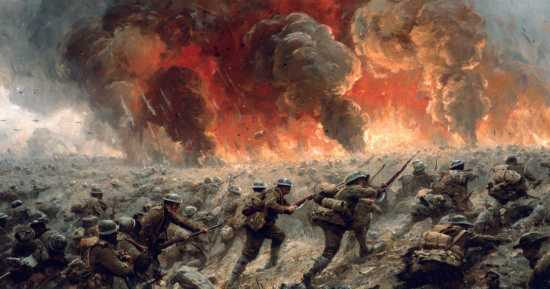
In the quiet hum of bustling cities and distant rural towns, the Causes Of World War 1 Quiz uncovers the vibrant culture of an era on the edge of transformation. Cafés filled with animated conversation reflected a society fascinated by progress and discovery. Artists, scientists, and inventors competed to define the spirit of a rapidly modernizing world. Across Europe and beyond, music halls echoed with new rhythms, while newspapers chronicled every breakthrough and debate with unmatched enthusiasm. Communities thrived on shared traditions even as they embraced change, blending heritage with a sense of possibility. It was a time shaped by ambition, collaboration, and an unshakable belief in cultural growth.
Life during this pivotal period revolved around invention, trade, and social connection. Trains and ships linked nations in ways previously unimagined, carrying not only goods but also ideas. Universities welcomed eager minds, where students debated economics, industry, and cultural identity late into the night. Markets brimmed with regional delicacies and handcrafted goods, symbols of proud local traditions standing beside imported luxuries. The hum of printing presses, factories, and workshops signaled a world that refused to stand still. This era was a tapestry woven from enterprise, art, and the determination of everyday people.
The Causes Of World War 1 Quiz celebrates this remarkable cultural backdrop. Grand exhibitions showcased the power of design and engineering, while theaters displayed dramas that explored modern questions with timeless insight. Families passed down skills and recipes, anchoring tradition in a world racing forward. Diplomats met in lavish halls where language and protocol reflected deep cultural nuance. Every detail of this period reveals a society brimming with energy, invention, and the drive to define its future.
Global Culture And Connection
Trade routes bound continents together in a network of exchange. Markets introduced exotic goods and unfamiliar tastes to curious buyers. Such exchanges reshaped habits and forged cultural curiosity. Cities became melting pots where architecture mirrored ambition and innovation. Every skyline revealed both tradition and transformation.
Language carried the spirit of this interconnected world. Translators and merchants bridged communication gaps, turning commerce into cultural diplomacy. Literary salons encouraged conversations that crossed borders. Writers, poets, and intellectuals shared ideas that inspired change. Words became the currency of collaboration.Fashion also told its story. Paris set the tone with bold designs, while London and Berlin offered distinctive refinements. Clothing choices reflected not only style but identity. Social gatherings became showcases of culture and aspiration. Each garment spoke to a world eager to define itself.
Economy And Innovation
Industrial expansion reshaped daily life. Factories produced goods faster than ever, fueling both local pride and international competition. New machinery dazzled crowds at public fairs, symbolizing a culture intoxicated with progress. These innovations didn’t merely change work—they redefined how people lived and dreamed.Transportation followed this same momentum. Expanding rail networks and steamship lines collapsed distances between nations. Fresh opportunities emerged for trade, travel, and cultural immersion. Global exchange became accessible to more than merchants and diplomats. It was a world driven by connection and possibility.
Innovation extended beyond industry. Universities became centers of discovery, hosting brilliant minds who sought to understand and improve society. Their breakthroughs influenced not only science but art and commerce. This relentless drive for progress defined the early 20th century’s cultural character.
Society And Shared Traditions
Public gatherings held powerful meaning in this era. Concert halls and theaters offered more than entertainment; they served as forums for shared experience. Audiences connected over music and drama that reflected their own lives and ambitions. Culture became a unifying language that crossed class and region.
7 Fun Facts About Causes Of World War 1 Quiz
- Cafés in Paris and Vienna doubled as hubs for political debate, music, and art in early 20th-century Europe.
- World expositions displayed everything from machinery to fashion, celebrating cultural and industrial achievement.
- Train travel popularized regional tourism, encouraging cultural mixing across cities and nations.
- Language schools expanded as cross-border trade demanded multilingual professionals.
- Art Nouveau architecture flourished, blending natural forms with modern engineering.
- Many towns hosted annual fairs where technology demonstrations stood alongside folk traditions.
- Music halls were community landmarks, where new songs spread faster than newspapers.
7 Serious Facts About Causes Of World War 1 Quiz
- Industrial growth in the early 1900s created vast urban populations eager for cultural and educational opportunities.
- Global trade networks expanded dramatically, connecting distant economies in unprecedented ways.
- Mass production lowered the cost of goods, enabling broader access to technology and culture.
- Scientific advancements transformed medicine, industry, and daily life across nations.
- Urban planning reshaped major cities, introducing parks, libraries, and cultural centers.
- Railway networks integrated local economies into international trade systems.
- Public education spread literacy, encouraging participation in both culture and commerce.
Causes Of World War 1 – FAQ
The main causes of World War 1 included militarism, alliances, imperialism, and nationalism. These factors created a volatile environment where tensions between countries escalated, eventually leading to the outbreak of the war in 1914.
The assassination of Archduke Franz Ferdinand of Austria-Hungary in Sarajevo on June 28, 1914, triggered a series of events that culminated in the declaration of war. This event served as a catalyst, further exacerbating the existing political tensions among European powers.
Alliances played a significant role in the escalation of World War 1 as countries were obligated to support their allies in case of a conflict. The complex web of alliances in Europe meant that a regional conflict could quickly escalate into a global war involving multiple nations.
